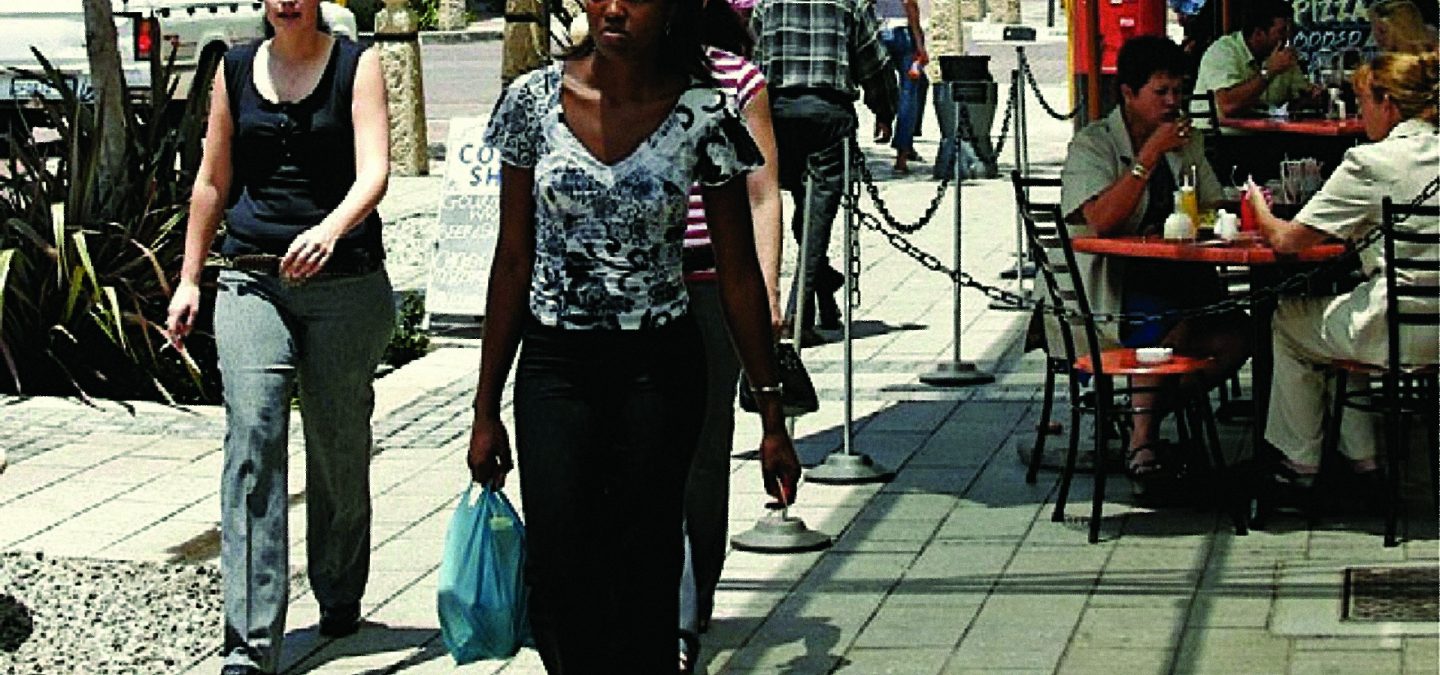
Keep up with our latest news and projects!

Johannesburg in South Africa has undergone many changes over the past decades, from a mining centre and industrial city to a metropolitan centre given over to financial and business services. This city of more than 3 million inhabitants is the economic core of South Africa and a major economic hub in the region. While Johannesburg displays some key characteristics of a well-developed and attractive city, there has been little direct integration between formal and informal activities.
Johannesburg was confronted with problems of business and residential vitality common to many cities: a declining inner city affected by waning industrialization, the development of suburban shopping malls, the decentralization of office parks, and “white flight” from inner residential areas. High levels of unemployment and poverty, rising crime rates, and the rise of an informal economy are additional crucial factors. The city had also inherited distinct socio-economic patterns from the apartheid regime and urban spaces remain strongly marked by past segregation.
The historical development of Business Improvement Districts (BIDs) can be traced back to Canada at the end of the 1960’s before they spread to the USA in the mid-1970’s and then on to other countries. In South Africa they are referred to as City Improvement Districts (CIDs) and the goal is “to maintain and manage the public environment at a superior level and thus enhance [the majority of the property owners] investments.” Since the 1994 democratic transition in South Africa, City Improvement Districts (CIDs) have been implemented under various forms in the Johannesburg metropolitan area.
Since the early 1990’s the concept of CIDs has spread widely to other cities in South Africa, including Johannesburg, as a response to urban blight and insecurity. They were also seen as an innovative solution to boost and foster economic development in suburban areas. CIDs enjoy support from public authorities and have become part of urban regeneration policies. The private sector played a key role in the transfer of the model, the adoption of the legislation and the spread of CIDs within the city.
Business and property owners established the forerunner of South African CIDs as a voluntary pilot project in the inner city of Johannesburg. The result was the Central Johannesburg Partnership (CJP), launched in 1992 as the result of an Inner City Strategic Workshop held the previous year. First established as a trilateral partnership – business, the City of Johannesburg and the community – the CJP concentrated on the sole representation of inner city business from 1995 onwards and became a private, non-profit company in 1998. The first CID stretched over a few blocks in the Central Business District (CBD) and focused on security, cleaning and maintenance, and upgrading of facilities for informal traders.
The Johannesburg’s model of a CID rapidly spread to other parts of the city. While expanding outside the CBD, the concept of CIDs evolved to adapt to the socio-economic conditions of these suburban nodes. The services provided by the CIDs are supplementary to those provided by the local authority. They usually include security, cleaning and maintenance of public spaces, marketing, physical improvements and special programmes to address aspects such as transportation, access and parking. Some CIDs also include social programs such as the creation of a Homeless Association, development of income-generating activities and a car guard scheme employing the homeless.
CIDs are active in the fields of urban design as well. They have developed a wide range of activities to provide a distinctive identity and market the districts. This is of particular importance in the suburban areas. Territorial strategies through branding and landscaping are intimately connected to the various practices of “place-making” and “place-promoting”. In the inner city, urban design activities include the transformation and upgrading of public space through capital improvement, landscape and pedestrianizing.
Main Street, a voluntary CID in the inner city, is an example of a re-design and reconstruction project destined to attract people back into the streets. This major redevelopment project covers six city blocks. With the re-design of the street, vehicular access has been limited, sidewalks extended to allow for open-air cafés, and trees have been planted along the streets. Attention has been paid to the historical identity of the area: a mining theme has been developed with new lighting based on 19th century city light standards and heritage artefacts related to the mining industry.
Elisabeth Peyroux, (2008) “City Improvement Districts in Johannesburg: An examination of the local variations of the BID model”
Interested? Join The City At Eye Level and share your story!
Discover moreCIDs give rise to concerns about the risk of reinforcing spatial inequalities: wealthy suburbs where businesses and property owners have the ability to pay additional taxes versus low-income townships whose commercial and economic bases remains poor. Proponents of CIDs see them as a way to provide opportunities for upgrading and enhancing public spaces without burdening the state. While the crime prevention component of CIDs might work towards a safer environment more conducive to social life, enforcing more control and surveillance of public space according to profit-driven strategies is seen as a potential source of discrimination and exclusion for certain segments of the population.
Nevertheless, CIDs embody new forms of public private partnership in the delivery of services and were given the mandate by the City of Johannesburg to collect the district levies directly from the property owners. The Johannesburg’s CIDs have found a supportive political context.